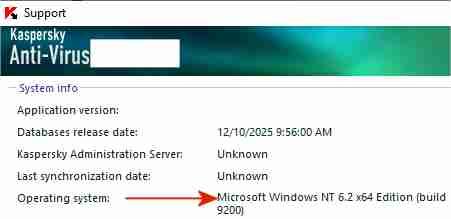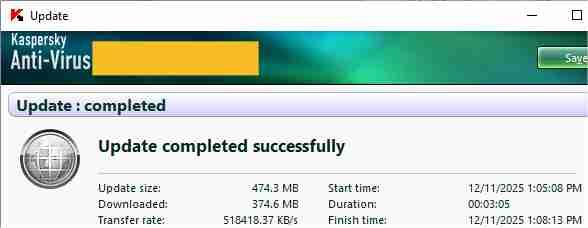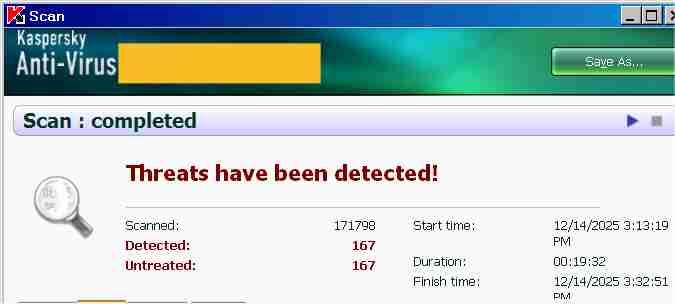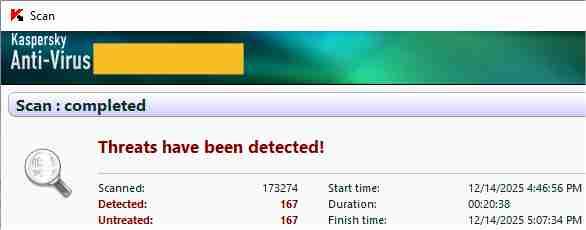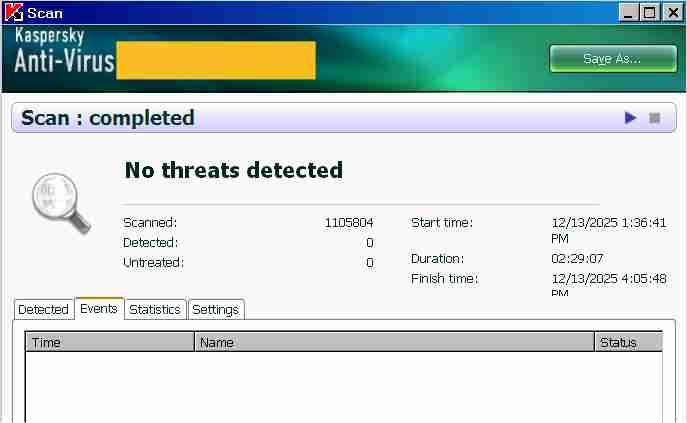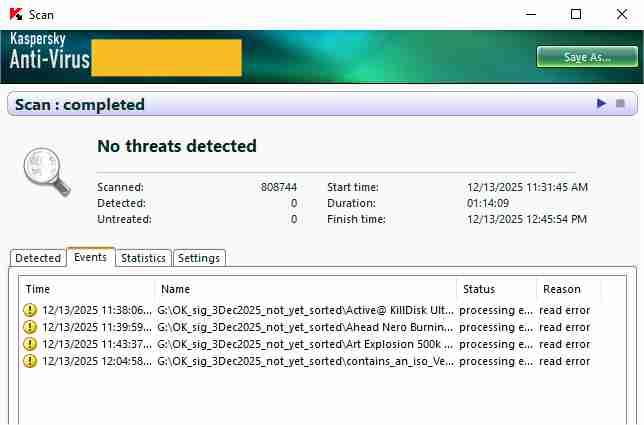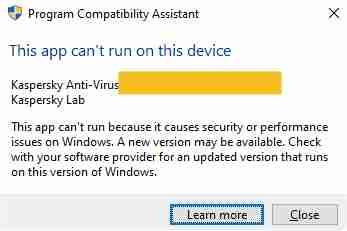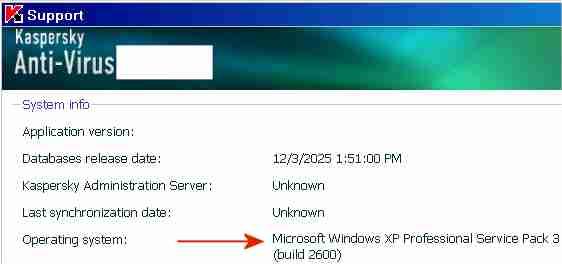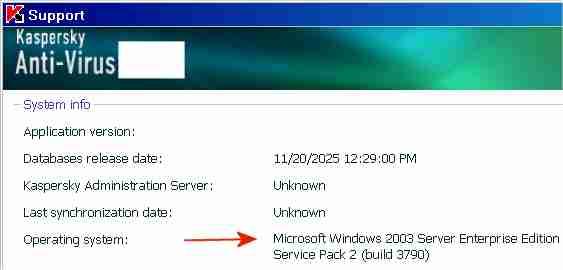
Multibooter
Member-
Posts
1,082 -
Joined
-
Last visited
-
Donations
0.00 USD
About Multibooter

Profile Information
-
OS
98SE
Recent Profile Visitors
5,360 profile views
Multibooter's Achievements
96
Reputation
-
KB2839299_2003 derived fltMgr upgrade that it is not...
Multibooter replied to modnar's topic in Windows XP
I have now installed fltmgr.sys build 5107 also under WinXP SP3 on my i7 desktop computer, by booting into Win10 and then copying fltmgr.sys onto the WinXP partition. fltmgr.sys build 5107 works fine on the 3.4GHz i7 desktop under WinXP SP3 and WinXP feels a little crisper The updated fltmgr.sys is a must-have for slow computers under WinXP, and a nice-to-have for WinXP on fast computers. The remaining question now is: Which build of fltmgr.sys is the best one for WinXP SP3? -
KB2839299_2003 derived fltMgr upgrade that it is not...
Multibooter replied to modnar's topic in Windows XP
Thanks for mentioning fltmgr.sys build 6750/KB4493563 in your posts. Build 6750 works OK on my SSE-only Inspiron 7500. The Properties sheet of fltmgr.sys indicates as File Version: 5.2.3790.6750 (srv03_sp2_qfe_escrow.190315-1901), no idea what "escrow" specifically refers to. On my Inspiron 7500 with a Pentium IIi ["SSE-only" = Non-SSE2] I have tested/run OK the following versions of fltmgr.sys: - MS fltmgr.sys v5.1.2600.2180 (WinXP SP2 32bit, 4Aug2004-19Jan2005) - MS fltmgr.sys v5.1.2600.5512 (WinXP SP3 32bit, 13Apr2008) - MS fltmgr.sys v5.2.3790.3959 (Win2003 SP2 32bit, 17Feb2007) - MS fltmgr.sys v5.2.3790.5107 (KB2839229, 7Jan2013) - MS fltmgr.sys v5.2.3790.6750 (KB4493563, 16Mar2019) - MS fltmgr.sys v5.2.3790.6912 (KB4512787, 11Jul2019) The above versions of fltmgr.sys work under both Non-SSE2 and SSE2. I don't use a special installer, just a file-copy after booting into another operating system. Are any additional registry entries necessary? Builds 5512, 5107, 6750 and 6912 seem to work OK under WinXP SP3 without additional registry entries.. "MS fltmgr.sys v5.1.2600.2180 (WinXP SP2 32bit, 4Aug2004-19Jan2005)" is a leftover on my Inspiron 7500 in \$ntservicepackuninstall$\, after the upgrade from WinXP SP2 to SP3. Its timestamp is 4Aug2004 and its file modificaton date is 19Jan2005. The big question now is: which build is the best one for WinXP SP3? -
KB2839299_2003 derived fltMgr upgrade that it is not...
Multibooter replied to modnar's topic in Windows XP
I have now installed fltmgr.sys v5.2.3790.6912 (11Jul2019) on my old 700MHz Inspiron 7500 under WinXP SP3, and everything works fine. Browsers with this old, slow laptop work MUCH less sluggishly under WinXP SP3 than with the original WinXP SP3 build 5512 when JavaScript is turned. I have made this posting with New Moon with fltmgr.sys build 6912 on this old laptop under WinXP SP3, which has now become much more useable. Thanks! Identical versions of fltmgr.sys v5.2.3790.6912 (11Jul2019) are contained in KB4512787 and KB4512788. I have not yet decided between the two builds 5107 and 6912 for WinXP. For now I will keep build 6912 installed under WinXP, to see whether any issues come up. -
KB2839299_2003 derived fltMgr upgrade that it is not...
Multibooter replied to modnar's topic in Windows XP
I have not had any problems with fltmgr.sys build 5107. fltmgr.sys build 5107 seems to work fine for me on my old Inspiron 7500 under WinXP SP3 + WinXP SP2 + Win2003 SP2 I have installed fltmgr.sys v5.2.379.5107, extracted from KB2839229, on an old Inspiron 7500 (Pentium III of the year 2001, 700MHz) two days ago, and EVERYTHING WORKS FINE , at least up to now. Mulitple operating systems are installed on the Inspiron 7500. I have installed fltmgr.sys build 5107 under Windows XP SP3 and under Windows Server 2003 on the Inspiron 7500. I didnot install fltmgr.sys v5.2.379.5107 on my i7 desktop under WinXP SP3, because speed/efficiency is not an issue with the i7 desktop. Windows XP SP3 and Windows Server 2003 SP2 feel MUCH crisper on the old 700MHz Inspiron after having installed fltmgr.sys build 5107. Windows Explorer and New Moon, for example, feel perceptably crisper. With the original fltmgr.sys, WinXP and Win2003 have felt like using a heavily fragmented HDD, with fltmgr.sys build 5107 it now feels like working with a freshly defragmented HDD. I have subsequently installed fltmgr.sys build 5107 on another old Inspiron 7500 under WinXP SP2, i.e. fltmgr.sys build 5107 seems to work OK also under WinXP SP2. Here some comments, maybe they provide a clue why fltmgr.sys build 5107 works on the old Inspiron 7500: 1) My old Inspiron 7500 has a single-core 700MHz Pentium III. WindowsServer2003-KB2839229-x86-ENU.exe also contains ntkrnlmp.exe (aka NT Kernel, Multi-Processor Version). Maybe fltmgr.sys build 5107 works OK under WinXP with single-core CPUs, but not with dual core, quad core etc? 2) I have not made any special registry settings, e.g. GroupOrderList 3) WinXP SP3, WinXP2 and Win2003 used with fltmgr.sys build 5107 are installed on FAT32 partitions, not on NTFS partitions. 4) The Pentium III CPU in the old Inspiron 7500 is SSE-only, i.e. is NOT SSE2 I did not use Hirens Boot CD etc for replacing fltmgr.sys. There are multiple operating systems on my Inspirons, with System Commander 9.04 as boot manager. The installation of fltmgr.sys build 5107 was made with a simple file copy under a different operating system, i.e. by booting into another operating system (e.g. Win2003), then renaming fltmgr.sys on the WinXP partition, then copying the new build 5107 to the WinXP partition and then rebooting back into WinXP. Download and description page of KB2839229 for Win2003: https://www.microsoft.com/en-us/download/details.aspx?id=39169 Download link: https://download.microsoft.com/download/d/9/d/d9d3677c-e57f-4066-85b1-b7642fcaa1f1/WindowsServer2003-KB2839229-x86-ENU.exe I have used UniExtract (koros) to extract fltmgr.sys v5.2.379.5107 from WindowsServer2003-KB2839229-x86-ENU.exe -
When you click on "Minimum" system requirements, it lists "Internet Explorer® version 11 and newer (Windows XP IE8)", so that's confusing.
- 1,249 replies
-
1
-
- Security
- Antimalware
-
(and 3 more)
Tagged with:
-
My ancient version of Kaspersky under Windows 10 My ancient version of Kaspersky installs, runs and works fine under WinXP. During the installation under WinXP I have de-selected the "Protection Components", I don't need them. Under Windows 10, however, immediately after clicking on the installer of the workstation edition of My ancient version of Kaspersky, the following message comes up: "Program Compatibility Assistant. This app can't run on this device Kaspersky Anti-Virus xxx This app can't run because it causes security or performance issues on Windows. A new version may be available. Check with your software provider for an updated version that runs on this version of Windows." The Program Compatibility Assistant of Windows 10 prevents the start of the installation of the workstation edition of My ancient version of Kaspersky under Windows 10. This blocking of the installation under Windows 10 by the MS Program Compatibility Assistant corroborates the BSI warning in the posting by AstroSkipper. The small print of the BSI warning of 15Mar2022 in the link by AstroSkipper indicates a possible non-technical motivation: "Im Kontext des Krieges, den Russland gegen die Ukraine führt, könnte ein russischer IT-Hersteller selbst offensive Operationen durchführen". [translation from German: "In the context of the war by Russia against Ukraine, it could be possible that a Russian information technology manufacturer could engage on their own in offensive operations"] I strongly doubt that the testing by the German BSI in 2022 included My ancient version of Kaspersky under Window XP (EOL of WinXP was 2014-2019). My ancient version of Kaspersky installs, runs and works fine with all versions of Windows from Windows 2000 thru Windows 7/Windows Server 2008, without being blocked by The MS Program Compatibility Assistant, they are listed in the User Guide as system requirements. The Program Compatibility Assistant was introduced with Windows Vista. The first posting I have found about Kaspersky being blocked by the MS Program Compatibility Assistant was of 10May2022 [the Russian invasion of Ukraine was on 24Feb2022] https://malwaretips.com/threads/problem-installing-kaspersky-anti-ransomware-tool.113730/ So the workstation edition of My ancient version of Kaspersky cannot be installed under windows 10. But hold it, there is another, little-known edition of My ancient version of Kaspersky. It is a specced-down workstation edition for virus-checking, without the "Protection Components". This edition is NOT blocked under Windows 10 by the Program Compatibility Assistant, i.e. it looks OK to the MS Program Compatibility Assistant. It installs, runs and works OK under Windows XP and Windows 10. The screenshot above shows this specced-down edition running OK under Windows 10. My ancient version of Kaspersky pre-dates Windows 10, and displays the Windows 10 operating system as "Microsoft Windows NT 6.2 x64 Edition (build 9200)". Screenshots above: This specced-down edition of My ancient version of Kaspersky updates OK under Windows 10. Comparing the specced-down edition under Windows 10 vs the normal workstation edition under WinXP 1) I made a virus check of "My personal in the Wild", a collection of 100 infected files from eMule, with the specced-down edition under Win10 and with the normal workstation edition under WinXP. Both test scans flagged the same number of infected files, so both the specced-down and the normal workstation versions are equally useful for virus-checking. Above: Scan result with the normal workstation edition under Windows XP SP3 Above: Scan result with the specced-down workstation edition under Windows 10 SUMMARY: Viruses. malware etc get flagged OK by both editions, under Windows XP and under Windows 10. The specced-down edition doesNOT get blocked by the MS Program Compatibility Assistant under Windows 10. 2) I also made another test-scan with the two editions under Windows 10 and Windows XP, this time with a set of clean, not-infected files (184 files, altogether 64GB). Above: Scan results of the set containing only clean files, with the normal workstation edition under Windows XP. Above: Scan results of the set containing only clean files, with the specced-down edition under Windows 10 The specced-down edition under Windows 10 produced four "processing error" messages, probably because of some incompatibility with Windows 10, but virus-checking continued uninterrupted, as usual. I would speculate that these processing error messages will not occur when the specced-down edition is run under WinXP. Virus-checking of clean files with the specced-down edition is more efficient (808,744 files scanned vs 1,105,804 files), reducing the scan-time substantially (1:14hrs vs 2:29hrs). The screenshots made under Windows 10 have a white title bar, while the screenshots made under Windows XP have a blue title bar. The above tests under Windows 10 and Windows XP were made on the same computer, which was set up for multi-booting into various operating systems. The specced-down edition seems to have fast virus-checking as objective. The Settings window of the specced-down edition, in contrast to the normal workstation edition, doesnot display a check-box for the selection/de-selection of the "iSwift" setting, which is a setting to speed up virus-checking on NTFS partitions. I manually changed three instances of the value "UseIStreams" in the KasperskyLab key in the Windows 10 registry in order to set "iSwift" to "off" for most of the checking by the specced-down edition under Windows 10, which is my preferred setting. Under WinXP I prefer the normal to the specced-down workstation edition, mainly because the normal version has worked fine for the past 10+ years.
- 1,249 replies
-
- Security
- Antimalware
-
(and 3 more)
Tagged with:
-
Yes, there are no more working license keys for My ancient version of Kaspersky. My last license key for My ancient version of Kasperky expired 10 years ago. When I then contacted Kaspersky in the US they informed me that they had no more license keys for My ancient version of Kaspersky for sale, and that I should contact their head office in Moscow, maybe they could sell me one. But that looked a little complicated to me, and I don't need daily updates. My ancient version of Kaspersky is definitely not eliminated. It is a trial version which has NO EXPIRATION DATE, in contrast to subsequent trial versions by Kaspersky, and runs indefinitely without a license key. It has been used nearly daily over the past 10 years, with near-current signatures, without requiring a license key. The limitation of this trial version is that it can be updated ONE time after installation. After the first successful signature update, the update button is greyed-out and doesn't work anymore. Here is the explanation of why My ancient version of Kaspersky is still updateable: I have been making progressive clean opsys/partition backups, since the initial installation of WinXP: step 1) created a clean opsys/partition backup step 2) test-installed e.g. 5 new programs, and e.g. 4 of them were rejected and 1 should be kept step 3) restored the preceding clean opsys/partition backup step 4) made a clean re-install of the program(s) I wanted to keep step 5) created the next clean opsys/partition backup with the new program(s) I wanted to keep etc The benefit of such progressive, clean opsys backups is that the computer stays clean and free of junk. When I made the clean install of My ancient version of Kasperky (step 4), - I installed the program - made all the desired customization settings - created a new progressive, clean opsys/partition backup (step 5), WITHOUT having updated Kaspersky The benefit of creating a progressive, clean opsys/partition backup of Kaspersky, WITHOUT having run the 1st signature update, is that the opsys backup file and all subsequent progressive backups do not get bloated with 700+ MB of signatures. A side benefit of creating a clean opsys backup of My ancient version of Kaspersky, WITHOUT having run the 1st signature update, was that whenever a subsequent progressive opsys/partition backup was restored (step 3), e.g. when making a new progressive opsys backup, a virgin version of Kaspersky was back again, permitting an update with the current signature.. I make progressive, clean opsys/partition backups about every 2-3 months, with new good stuff added progressively. My ancient version of Kaspersky has worked fine for me, even with signatures up to 3 months old. Below are two screenshots of My ancient version of Kaspersky under WinXP SP3, updated last week to the signature of 3Dec2025. The Server edition of My ancient version of Kaspersky also installs, runs and updates fine under Windows Server 2003 on my Inspiron 7500 laptop (Pentium III of the year 2001, 700MHz). Below are three screenshots under Windows Server 2003 of 20Nov2025. I had installed Win2003 on my Inspiron 7500 because WinXP cannot be made to work with GPT HDDs >2TB on a Pentium III laptop. My ancient version of Kaspersky can virus-check OK stuff on a 4TB HDD, under Win2003 on a 24-year-old Pentium III laptop, although it is extremely slow.
- 1,249 replies
-
1
-
- Security
- Antimalware
-
(and 3 more)
Tagged with:
-
Experimenting with GPT and Hard Disks >2TB under WinXP
Multibooter replied to Multibooter's topic in Windows XP
A license key and the corresponding, customized download link of DRevitalize can still be bought from the author if you contact him at his email address. -
Experimenting with GPT and Hard Disks >2TB under WinXP
Multibooter replied to Multibooter's topic in Windows XP
No. h2testw of 11Feb2008 is mainly for SDHC cards or USB sticks and doesNOT work with HDDs >2TB: A 3.09TB partition on an OK 4TB HDD, connected via eSATA to my old Inspiron 7500 (Pentium III, 700Mhz), gets incorrectly displayed under Windows 2003 (32bit, SP2, Enterprise, 18Feb2007) as "879249 MByte". Updated on 9Dec2025: The "879249 MByte" incorrectly displayed by h2testw as partition size are the "858GB" Free Space of the 3.09TB partition, as displayed OK by My Computer under Win2003. This incorrectly displayed capacity by h2testw is a typical characteristic of programs NOT compatible with HDDs >2TB. Using h2testw on HDDs > 2TB will most likely corrupt the HDD. As a minor linguistic note: the English-language interface window of h2testw (German software) displays "879249 MByte", instead of the correct plural "MBytes"; in German the singular and plural forms of "MByte" seem to be the same. -
I assume your HP Laserjet 2420 is a black and white printer of the the year 2004. I have a color Laserjet 2605 of the year 2006 and have used it also via IP. Fiddling around with it is very time-consuming. Suggestions and thoughts, maybe they help: - reinstall the printer driver + create a NEW printer icon in Printers and Faxes - installing the older driver from the original driver CD had worked for me, but not a more recent driver downloaded from HP - I started to install the driver from the CD WITHOUT the printer connected during the installation a window came up: "Connection Type" -> Directly using a USB cable then a window came up "Connect your device Now -> power on the printer -> connect the USB cable - IEEE 1284 is Centronics [=slow parallel], the USB printer icon created for my HP2605 was originally named "HP Color Laser Jet 2605dn_2605dtn PCL6"
-
Experimenting with GPT and Hard Disks >2TB under WinXP
Multibooter replied to Multibooter's topic in Windows XP
Experiment 2: How to reset the SMART values of a 4TB Toshiba HDD Update 13Dec2025: The 5 screenshots of the original posting were deleted, because of limited upload space. The posting with the screenshots can be viewed at https://web.archive.org/web/20251213213506/https://msfn.org/board/topic/186840-experimenting-with-gpt-and-hard-disks-2tb-under-winxp/ I was copying stuff under WinXP onto a Toshiba 4TB HDD in an external docking station. By mistake I pressed the wrong switch on the power strip and switched OFF the power supply of the external docking station, while the computer was writing to the 4TB HDD in it. After 3 seconds I noticed my mistake and switched the power supply ON again. WinXP on the desktop computer quickly froze and I had to pull the plug of the desktop computer. The activity light of the docking station with the 4TB HDD, however, kept on flashing (separate power supply), even after the desktop computer was powered off. I let the docking station flash for about 15 minutes, then powered off the docking station. I made several attempts to find out whether the 4TB Toshiba HDD was still OK 1) When I restarted the computer, with the 4TB HDD in the docking station, connected as before to onboard SATA, I got the BIOS message: "S.M.A.R.T Status Bad, Backup and Replace, Press F1 to Resume". 2) I then connected the external docking station to the ASM1061 SATA PCIe card set to IDE Mode. When booting I got the error msg by the ASM1061 card: Contact manufacturer. 3) I then booted the desktop computer with the Paragon Hard Disk Manager 15 and Acronis Disk Director 12.5 boot CDs (both Linux). The 4TB Toshiba HDD was NOT displayed anymore in their partitioning windows. BRICKED? 4) I then connected the external docking station with the 4TB HDD to the eSATA CardBus card in my old Inspiron 7500 laptop (Pentium III 650MHz, Phoenix BIOS of 1999, no detection of SMART values), and low and behold, the Acronis Disk Director 12.5 boot CD (Linux) displayed OK the 4TB HDD. I selected "Clean up" in the Acronis menu to set the 4TB to uninitialized. I then initialized, still with the Acronis boot CD, the 4TB HDD to GPT. My 25-year-old laptop can sometimes do more than a more recent desktop! The 4TB Toshiba HDD was displayed under WinXP by Hard Disk Sentinel as "BAD". The power failure while writing had also caused a reset of Power on time to "0 days 0 hours" and the Total start/stop count to 1. Hard Disk Sentinel has in its Information tab a Short Self-test and an Extended Self-test. I ran the Short Self-test, message after 2 minutes: HDD is OK, then ran the Extended Self-test, message after 3 minutes: HDD is OK. BUT: the health of the 4TB HDD was still displayed as 0%, with failure predicted. After these two OK tests I had my doubts about the "BAD" SMART status of the nearly new 4TB Toshiba HDD. I low-level formatted with my old Inspiron laptop under WinXP the 3626.0GB of the 4TB Toshiba HDD, with HDD Low Level Format Tool 4.50. LLFMT of this "BAD" 4TB HDD took 13:34:03 hours at 82.7MB/s, no error messages and the formatting time and average speed were about the same as when I had low-level formatted the 4TB HDD fresh out of the box. Extended Self-test OK, LLFMT OK and at the same speed as when the 4TB HDD was new. The 4TB HDD seemed OK to me. I decided not to run with Hard Disk Sentinel the -> Disk -> Surface test -> Reinitialize disk surface on the 4TB HDD because this would have taken 5+ days. ["Overwrites the disk surface with special initialization pattern to restore the sectors to default (empty) status and reads back sector contents, to verify if they are accessible and consistent. Forces the analysis of any weak sectors and verifies any hidden problems and fixes them by reallocation of bad sectors (this is drive regeneration)."] For resetting SMART I used the selections "Clear defect reassign list" and "SMART Reset Attribute Values" of DRevitalize v3.32 (DOS version, 12Jul2019) on a FreeDOS boot floppy. The initial attempt briefly displayed "ERROR" in the Result column, after repeated attempts "SUCESS" was displayed, maybe several sub-HDDs are inside the 4TB Toshiba HDD and required multiple attempts, no idea. In any case the SMART values were reset, no more "BAD" flag. The "BAD" Raw Read Error Rate, Power on time, Total Start/Stop and other SMART values were reset. The Paragon Hard Disk Manager 15 and Acronis Disk Director 12.5 boot CDs in the desktop computer displayed again the 4TB GPT HDD. After having reset the SMART values I re-ran the Extended Self-test, which took nearly 8 hours instead of the 3 minutes with the previous Extended Self-test. Message: Extended Self-test Successfully Completed. I have put a hand-written sticker "Self-refurbished OK" on the 4TB Toshiba HDD. DRevitalize v3.32 is a special build for WinXP, the preceding v3.31 and the subsequent versions require Windows Vista. The ability to handle Toshiba HDDs was added in this v3.32. DRevitalize v3.32 runs OK on a 4TB GPT HDD under WinXP with GPT Loader installed. The demo version 3.32 can be downloaded at https://drevitalize.com/current/Drevitalize332demo.exe Unfortunately the feature "SMART Reset Attribute Values" has been removed from the Windows demo version 3.32 and "license ordering is no longer available. Project is on hold" https://drevitalize.com/order/ The DOS version on the FreeDOS boot floppy, however, CAN reset the SMART values of a 4TB Toshiba GPT HDD, but is otherwise limited and cannot display the SMART values. DRevitalize v3.32 is of 12Jul2019 and still worked OK on the Toshiba 4TB GPT, manufactured in December 2023. DRevitalize v3.32 is a little jewel and has many other uses. Resetting SMART values with it is quite easy, other features are very advanced, highly recommended. Anybody here has experience with the non-demo Windows installer version of DRevitalize v3.32 ? -
A working browser, reliable virus-checking and the ability to work with 4TB+ HDDs make a computer/operating system useful in 2025 and later, at least for me. WinXP without these three capabilities is of limited use. Two of my computers work already fine with 4TB GPT HDDs under WinXP/2003 (read/write, partitioning. virus-checking, watching movies, Beyond Compare. Sandboxie, etc) WinXP on these 2 computers is "SP3-only", and does not contain "all updates until end of support" nor "all of the extended support updates". My first set of two 4TB GPT HDDs (Master+Backup) was created under WinXP SP3 and Win2003 32bit SP2, with both 4TB HDDs partitioned unaligned, i.e. by setting "Legacy" mode in Paragon HDM12 before creating the partitions. The first set of 4TB HDDs has worked mostly fine under WinXP/2003/Win10. I will now create more sets of 4TB+ GPT HDDs, containing different accumulations of stuff, mainly for use under WinXP/2003. Before starting to partition the 4TB+ HDDs under WinXP/2003, however, I will have to decide on the setting: Legacy [=unaligned] or Vista [=aligned]. The wrong choice may mean that eventually 100TB+ of stuff may have to be copied again Working under WinXP with GPT HDDs <=2TBs is easy, maybe a good exercise for getting acquainted with GPT under WinXP. Working under WinXP with GPT HDDs >2TB, however, is the tricky part. MiniTool Partition Wizard v11.4 (last version for WinXP), for example, doesNOT work under WinXP with GPT HDDs of any size (<=2TB and >2TB): an OK partitioned 4TB GPT HDD gets displayed as having a single partition and nothing happens when you right-click on it. My currently preferred software for creating partitions on 4TB GPT HDDs under WinXP/2003 is Paragon Hard Disk Manager 12 v10.1.19.16240 (Server, 25Nov2012). In PHDM12 the blue screen installer bug of GPT Loader of PHDM11 was fixed, it contains the last version of their old [=well-tested] partitioning engine, no .NET Framework. Paragon removed from PHDM12 the huge Total Defrag component, maybe issues defragging with PHDM11 under WinXP a 4TB GPT HDD?
-
I am about to combine software downloads, spread out over several smaller HDDs, onto a single 4TB GPT HDD. The 4TB GPT HDD will be read and written to mainly under Window XP SP3 (with Paragon GPT Loader) and under Windows Server 2003 32bit SP2, with occasional read/write access by Windows 10. The 4TB GPT HDD will be used only for data storage, and I will create both a master 4TB GPT HDD and a backup 4TB GPT HDD. Should I create aligned or not-aligned (=CHS-aligned) partitions on the 4TB GPT hard disk drives? The two 4TB GPT HDDs are Toshiba HDWD240, the label on them has an "AF" symbol and Hard Disk Sentinel displays under WinXP "Bytes Per Sector: 4096 [Advanced Format]". Victoria v5.23 displays under WinXP: "Sector: Logic 512 bytes, Phys 4096". PartitionGuru v4.7.0 under WinXP displays "Sector Size: 512 Bytes, Physical sector Size: 512 Bytes". A major criteria is backward compatibility. Which Windows XP software doesNOT work with aligned partitions? Which Windows 10 software doesNOT work with not-aligned partitions? Which hardware or driver doesNOT work with aligned/not-aligned partitions? Does Windows XP/2003 have serious bugs when using aligned partitions? Does Windows 10 have serious bugs when using not-aligned partitions? Does boot-time/startup CHKDSK of WinXP/2003/Win10 have issues with aligned/not-aligned partitions on a 4TB GPT HDD? Is the question about partition alignment on a 4TB GPT HDD irrelevant? Do both aligned and not-aligned partitions work OK on a 4TB GPT HDD under WinXP/2003/Win10? Is there a worth-while increase in computer efficiency/speed, with a 5400rpm 4TB data storage HDD, when you use aligned partitions under Windows XP/2003? If the 4TB GPT HDD should ever go bad, is it easier to recover data from aligned or not-aligned partitions? When the onboard SATA controller (e.g. the Intel ICH5 onboard the Asus P5PE-VM motherboard of 2006) incorrectly detects under WinXP a disk geometry of 855388/121/34 (instead of 219051/255/63) for the 4TB GPT HDD connected to onboard SATA, will aligned or not-aligned partitions work OK? In Paragon Hard Disk Manager 11, 12, 14 and 15 you have the choice of creating aligned or not-aligned partitions under WinXP, with the selection -> Tools -> Settings -> General options, section Partition Alignment Mode. You can also create a mix of aligned and not-aligned partitions on a GPT HDD with Paragon HDM under WinXP/2003 by switching between "Legacy" and "Vista" Alignment mode in Settings -> exit PHDM -> restart PHDM -> create partition. There are several alternatives: 1) create not-aligned partitions on both the Master and Backup 4TB GPT HDD 2) create aligned partitions on both 4TB HDDs 3) create aligned partitions on one 4TB GPT HDD, and not-aligned partitions on the other 4TB GPT HDD 4) create a mix of aligned/not-aligned partitions depending on e.g. the file system (FAT32/NTFS) Answers to the various sub-questions above may help find an answer to the main question here: Should I create aligned or not-aligned partitions on the two 4TB GPT hard disk drives?
-
I am using under WinXP on my i7 desktop: Foxit Phantom PDF v7.0.8.1216 and on my old 700MHz Pentium III laptop: Foxit Phantom v2.2.3.112






